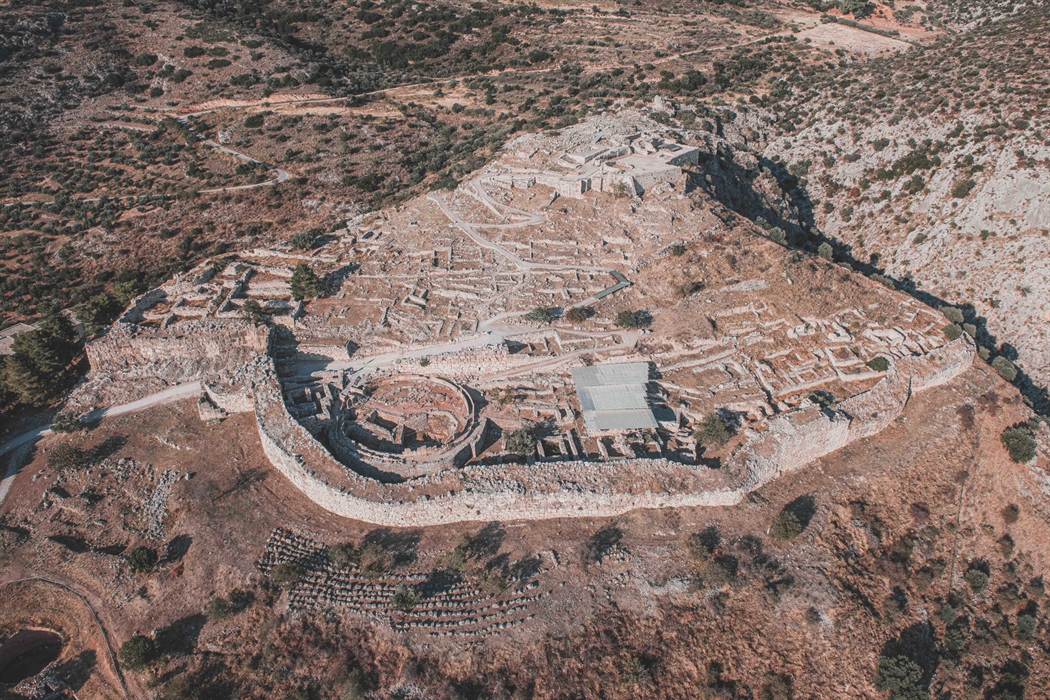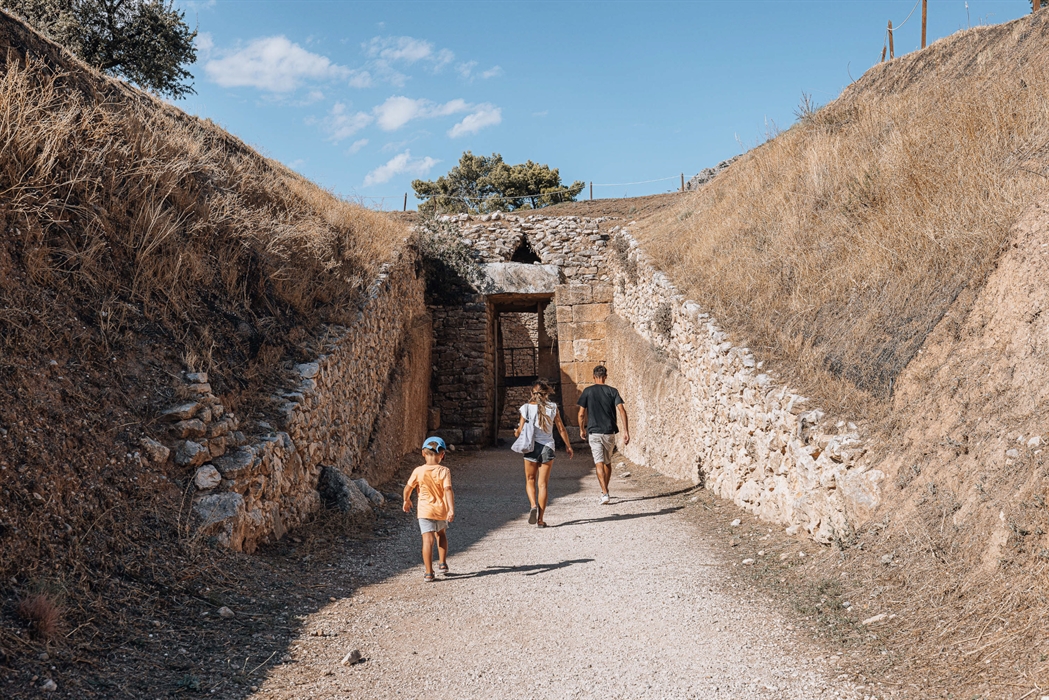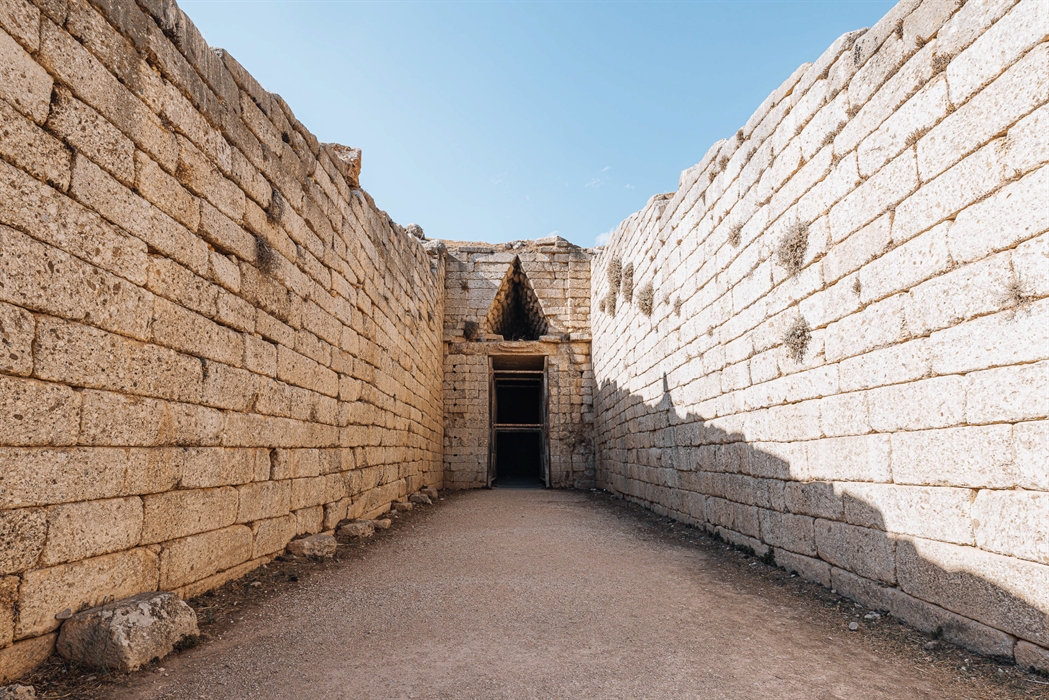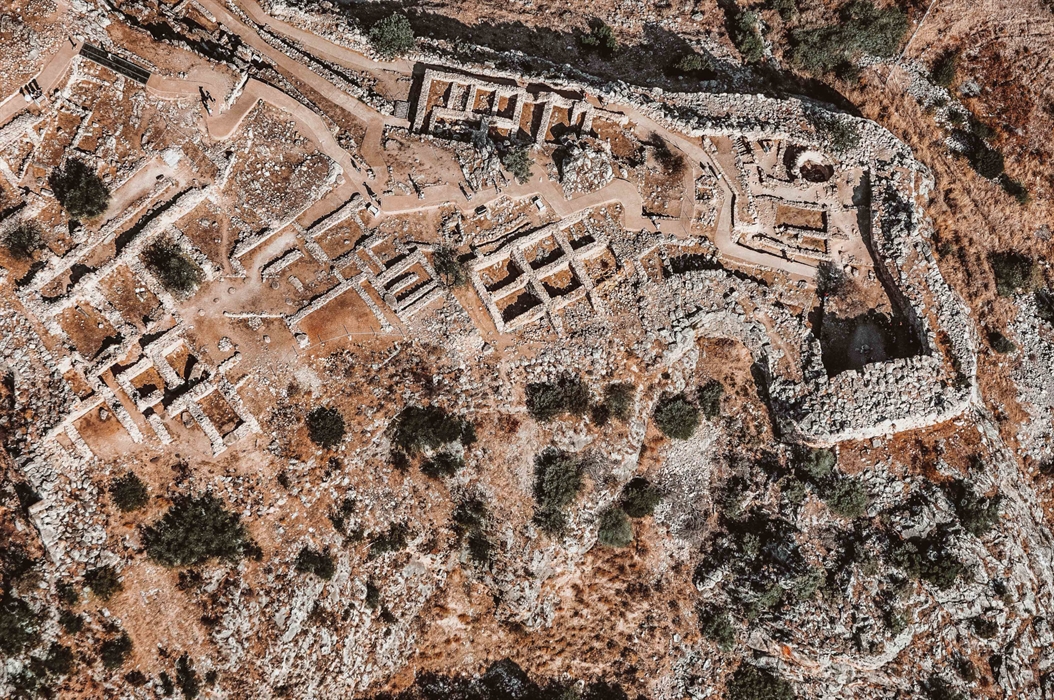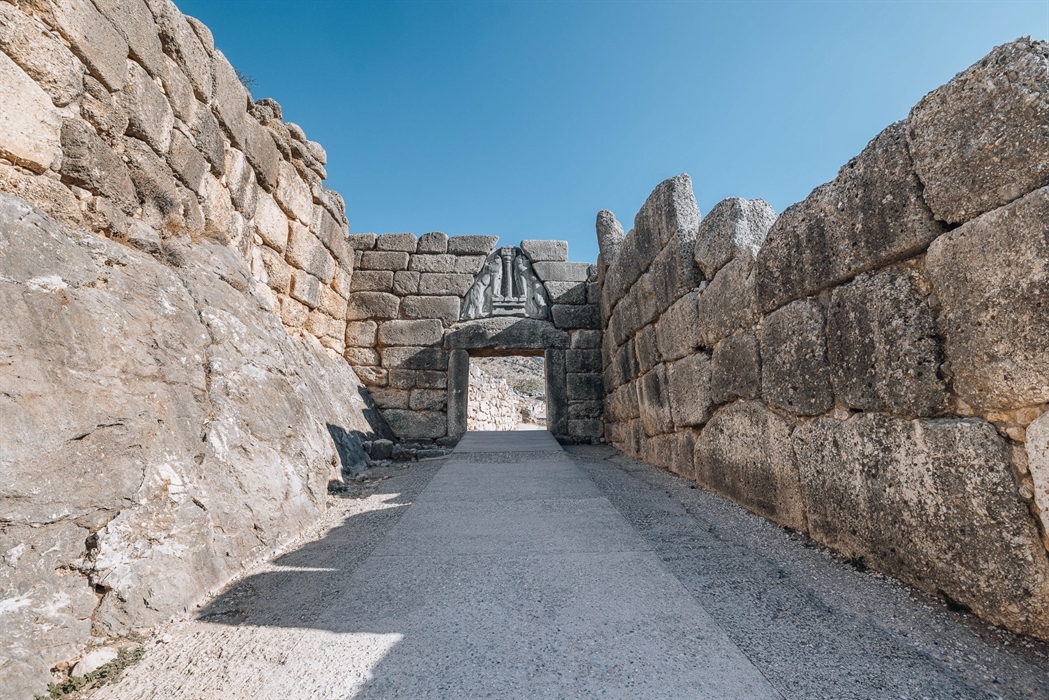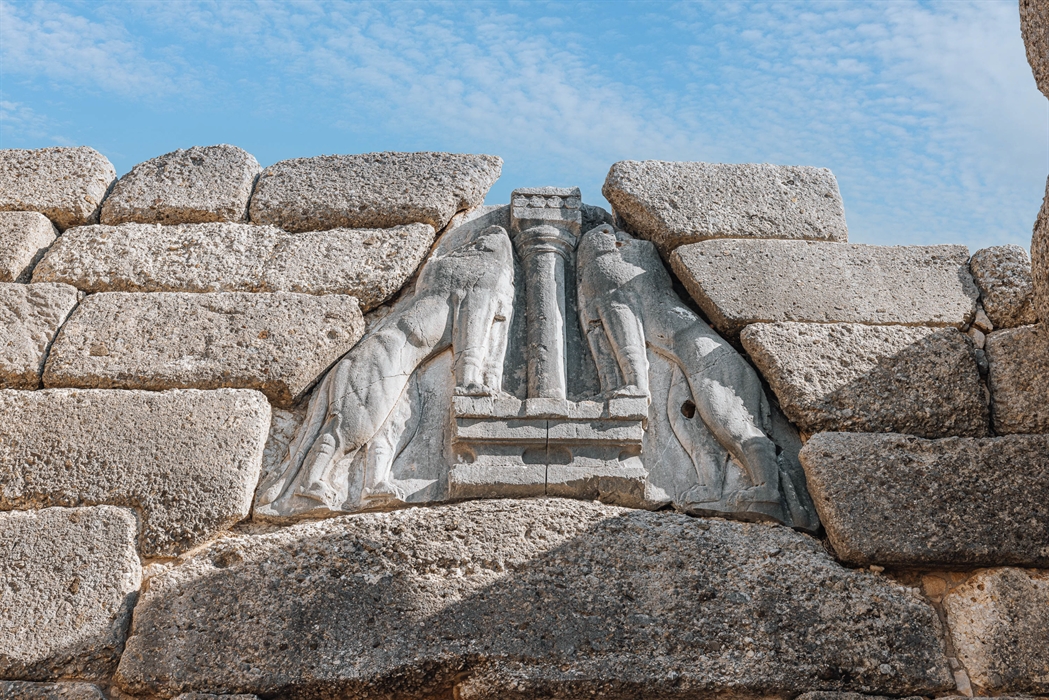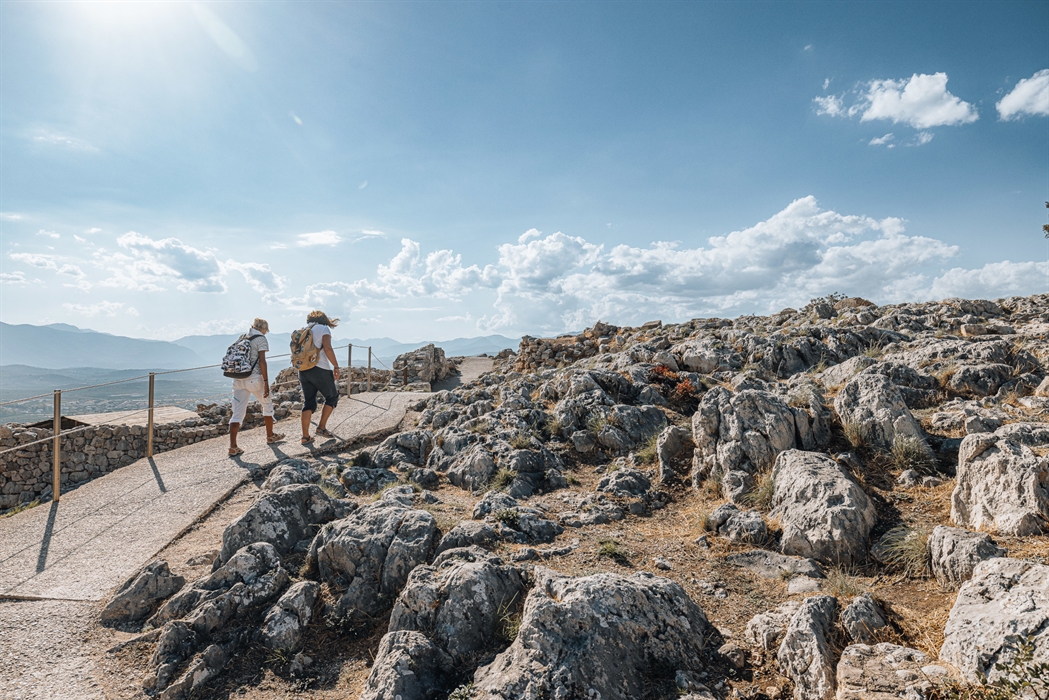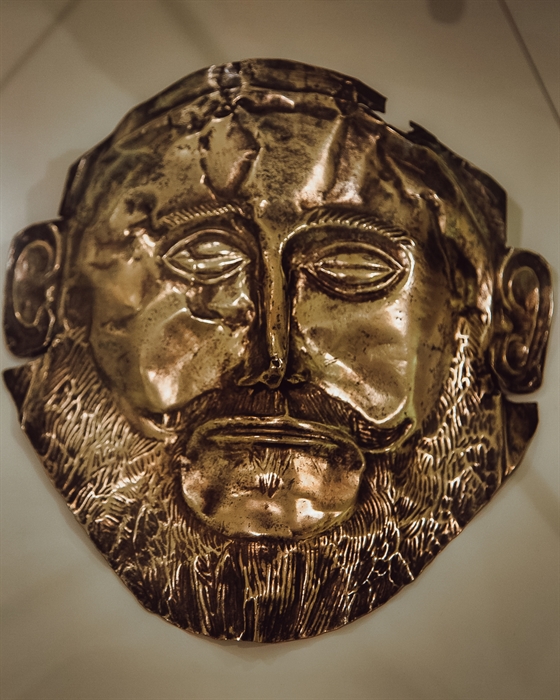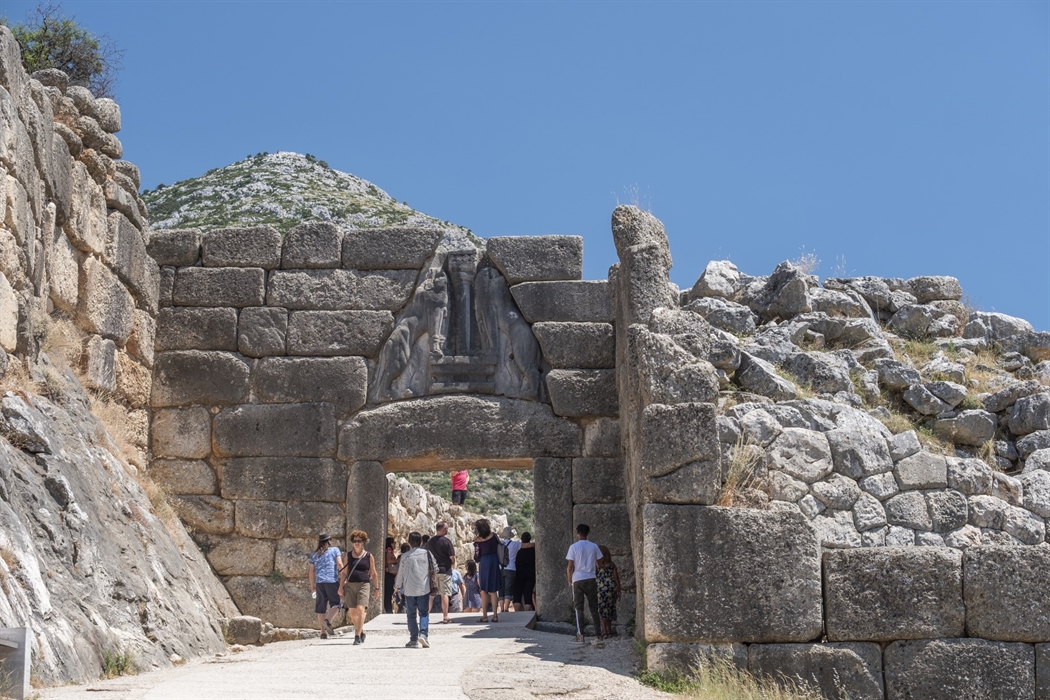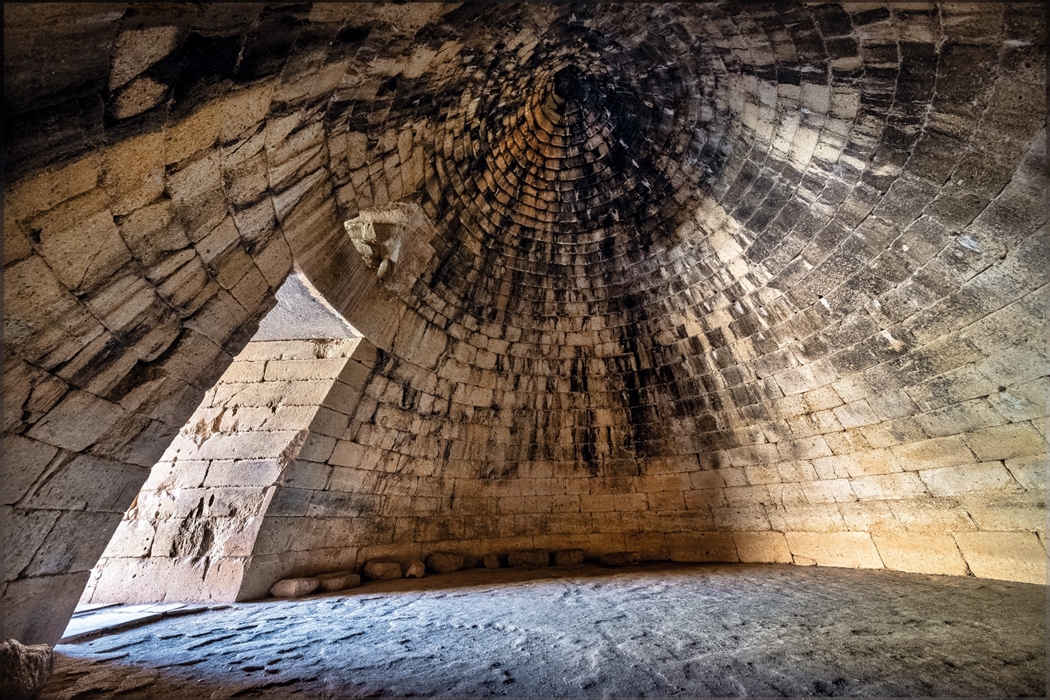The archaeological site of Mycenae
The famous Mycenaean civilisation flourished in the Peloponnese, and Mycenae is its outstanding creation. Born of gods and heroes, immortals and mortals, this is a civilisation which will inspire you with its mythology, history and majestic architecture. Ancient Mycenae was a powerful and rich centre during the Late Bronze Age, with its heyday being between 1,350 and 1,200 BC.
Mycenae has been standing strong for thousands of years in a rocky landscape with a view of the Argolic Gulf. It is the most brilliant creation of the Mycenaean world. Born of gods and heroes, immortals and mortals, this is a civilisation which will inspire you with its mythology, history and majestic architecture. Ancient Mycenae was a powerful and rich palatial centre during the Late Bronze Age, with its heyday being between 1,350 and 1,200 BC.
Although these magnificent works fell into ruin and were hidden underground for centuries, when they came to light once again Mycenae looked as if it had never lost its lustre and grandeur. After all, the citadel had been kept alive in the collective memory of people all over the world thanks to Homer’s epics and to the great classical tragedies such as those by Sophocles, Aeschylus and Euripides.
The citadel of Mycenae (along with Tiryns) was declared a UNESCO Heritage Site in 1988.
Mythology tells us that Mycenae was founded by Perseus, son of Zeus and Danae who was the daughter of Akrisios, king of Argos. The descendants of Perseus ruled for three generations but when Eurystheus, who was the last in line, was killed without leaving descendants, the inhabitants chose Atreus, the father of Agamemnon and Menelaus, as King.
Thousands of years later, the German businessman Heinrich Schliemann was fascinated with Homer's epics and was guided by them when he started the excavations which would prove the existence of the great Mycenaean civilization.
There is little remaining evidence of the earliest human activity in the area. It seems that the first human activity here was around the 7th millennium BC, during the Neolithic period. The area was occupied continually until historical times. Most of the monuments that are visible today belong to the heyday of the Mycenaean civilization.
Successive disasters and fires led to the site being abandoned around 1100 BC. In the following centuries, the small town that had been created there by the Argites during the Hellenistic period remained almost abandoned. It was already in ruins when the Greek traveller and geographer Pausanias visited it in the 2nd century AD.
THE MONUMENTS
The archaeological site includes the walled citadel at the top of the hill, along with scattered burial and settlement complexes outside the walls (mainly to the West and Southwest).
The main monuments are:
The Cyclopean Walls. The citadel of Mycenae was built on a hill which is about 280 m high. It was naturally fortified and the only vulnerable point was to the west. According to mythology, Perseus commissioned the Cyclops to build these walls. What we see today are the imposing defensive walls which were put in place in the final phase of construction and which enclose a total area of 30,000 sq.m.
The Citadel and the Lion Gate. The Citadel is almost triangular and was fortified by the cyclopean walls. Its main entrance is the famous Lion Gate, an imposing symbol of the Mycenaean rulers’ power. Although it was built well over 3,000 years ago it still conveys a message of strength and authority, and inspires a sense of awe in anyone who approaches it. If you look up at the sculpture that gives the gate its name, you will see two symmetrical lions facing each other, another symbol of the power of the Mycenaean civilisation. Interestingly, no similar carvings have been found in any of the other Mycenaean citadels, so this appears to be unique to Mycenae.
The underground cistern that supplied water to the settlement. Its entrance was inside the walled city and it dates back to the end of the 13th century. It is a work of engineering which is unique in the prehistoric era.
The north gate. This was the second gate in the wall, of the same construction as the Lion Gate, but smaller.
Grave Circle A. This burial circle encloses six shaft graves found in the compound inside the citadel. Skeletons of men, women and children were discovered there, as well as many gold objects and other valuable works of art.
Among the gold objects discovered by Schliemann in a burial chamber in the burial enclosure was the so called “Mask of Agamemnon”. It is the most beautiful of the five golden masks found here, and must have been intended for a ruler or a leader. This one is the only mask that depicts a bearded man with such strong facial features. It is currently exhibited in the National Archaeological Museum of Athens.
The religious centre with building such as the Temple of the Idols, the House of the Frescoes, Tsountas's House and the Priest's House. Many important archaeological finds were discovered in the buildings here, and you can see these in the Archaeological Museum of Mycenae.
The palace stands at the highest point of the citadel. The official apartments consist of the large courtyard, the guest house and the core of the complex, the Mycenaean throne room. The latter consisted of three parts: the hall, a vestibule (prodomos) and the main chamber (domos), where the ruler's throne and a central hearth were located. The palace complex includes other buildings.
Burial Circle B. Found in 1951, outside the citadel and next to the vaulted tomb of Clytemnestra. It is one of the most important monuments on the site and was useful to archaeologists as they found evidence of the Mycenaeans’ funerary architecture and burial customs. It was part of the prehistoric cemetery and contained 24 graves which were surrounded by a circular enclosure. It dates back to around 1650-1550 BC. Only four of the graves had tombstones which, together with those of Grave Circle A, are the first examples of memorial sculpture with relief decoration.
The Treasury of Atreus or Tomb of Agamemnon. This is one of the largest and most complete Mycenaean vaulted tombs, the most impressive of the nine that have been discovered. It dates from between 1350 and 1250 BC and was used for the burial of an important member of the royal family of Mycenae. Read in more detail.
Did you know that
See information about the excavations and Heinrich Schliemann.
Tel.: +30 27510 76585. Opening hours: April 08:00-19: 00, May-October: 08:00-20:00.
Mycenae is 140 km from Athens and 24 km from Nafplio.
Take a walk along the ancient path that connected Mycenae with Prosymna. The starting point is the entrance of the archaeological site and the route is signposted. In some places you will walk on the traces of the ancient cobbled path. On your way, you will see the bridge of Dragonera and Lykotroupi, you will pass by olive groves, and on the last part of the walk you will see ruins of Roman baths and a tower from the fortification of Prosymna that dates back to classical times.
Heinrich Schliemann
Read about the the controversial German businessman and amateur archaeologist Heinrich Schliemann who excavated the Mycenae and Troy.
The controversial German businessman and amateur archaeologist, Heinrich Schliemann, was passionate about Homer and ancient Mediterranean civilizations. He was sure that he had found the ruins of ancient Troy on the hill of Hisarlik in Northwest Turkey in 1871 - something that has been disputed by a number of researchers.
In 1873 he discovered the famous "Treasure of Priam" which he attributed to the mythical king of Troy (however scientists dated it as being from 1,000 years after the Trojan War). This find included an incredible haul of about 9,000 items of great value. After various adventures, part of the collection ended up in the Pushkin Museum of Fine Arts in Moscow. Schliemann later excavated at Mycenae and Tiryns.
It is in Mycenae that Schliemann discovered the famous golden mask that for so many people is the face of Mycenean culture. However, his belief that this mask belonged to Agamemnon is generally considered incorrect.
Schliemann wrote several books about his excavations. He is still internationally recognised for the pioneering aspects and magnitude of his work. However, it has been stated that due to his inexperience, lack of methodology and his haste, he destroyed valuable archaeological evidence.
The Mycenaean world
The Mycenaean world (1600-1100 BC) developed in Greece, and was essentially a bridge between the East and the West. Its impact stretched from Asia Minor, the Near East and Egypt to the Western Mediterranean and North-western Europe. It is traditionally believed that the forerunners of the civilisation, the Greek-speaking Achaeans, settled in Greece in around 2000 BC. The inception of the Mycenaean civilization was marked by the rise of groups of warrior kings who maintained relations with the already advanced Minoan civilisation of Crete.
The palaces of Mycenae, Tiryns and Pylos in the Peloponnese, as well as Thebes in Boeotia, were administrative, economic, military and religious centres. All of them were surrounded by "Cyclopean walls”.
The central administration was headed by the Anax, who kept records of clay tablets in Linear B, the first Greek script, which was adapted to the Greek language from Minoan Linear A. Organised settlements developed around the citadels and cemeteries with chambered tombs were built. The rich archaeological finds from these graves demonstrated that the cities were prosperous and socially stratified. The palace administration system is considered to have collapsed at the end of the 13th century BC, after the Trojan War which was a joint effort undertaken by the Achaean rulers. The causes of this collapse are considered to be social unrest, economic decline, strong earthquakes and the movements of the peoples "of the land and the sea" in the Mediterranean, which destroyed the centres in Asia Minor and the East.
Location
Find the destination on the interactive map below.
Categories
Weather
Σχετικό περιεχόμενο χρηστών (UGC)
Ενημερωθείτε για ενδιαφέροντα θέματα γύρω από τον προορισμό μέσα από το περιεχόμενο των χρηστών μας
Discover 7 hidden gems of the Peloponnese
Many of you may have already visited some of the most renowned attractions…
TOP 10 archaeological museums in the Peloponnese
Olympia, Mycenae, Epidaurus, Diros Cave, Ancient Corinth, Messene and…
TOP 10 Castles in the Peloponnese
Castles galore! Mystras, Monemvasia, Palamidi, Methoni, Koroni,…
Newsletters
- About us
- FAQ's
- Map
- Tourism information centers
- Disclaimer
- Sitemap
- Our brand
- Media roum
- Adding your bussiness
- Corporate
- MICE

Peloponnese. Greece beyond the obvious





Design and creation from Cosmote
Marinas and Moorings
Diving centers
Get inspired
- Media gallery
- Blog
- The Peloponnese in the media
- Your feedback
- Users' general content
- Users' local products
- Users' events content
- Ask a local
More
- Accommodation
- Travel agencies
- Restaurants
- Services
- Destinations Map
- Weather
- Public transport
- Events
- Frequently asked questions
- Useful phones
- B2B
- Destination Data
- Contact

